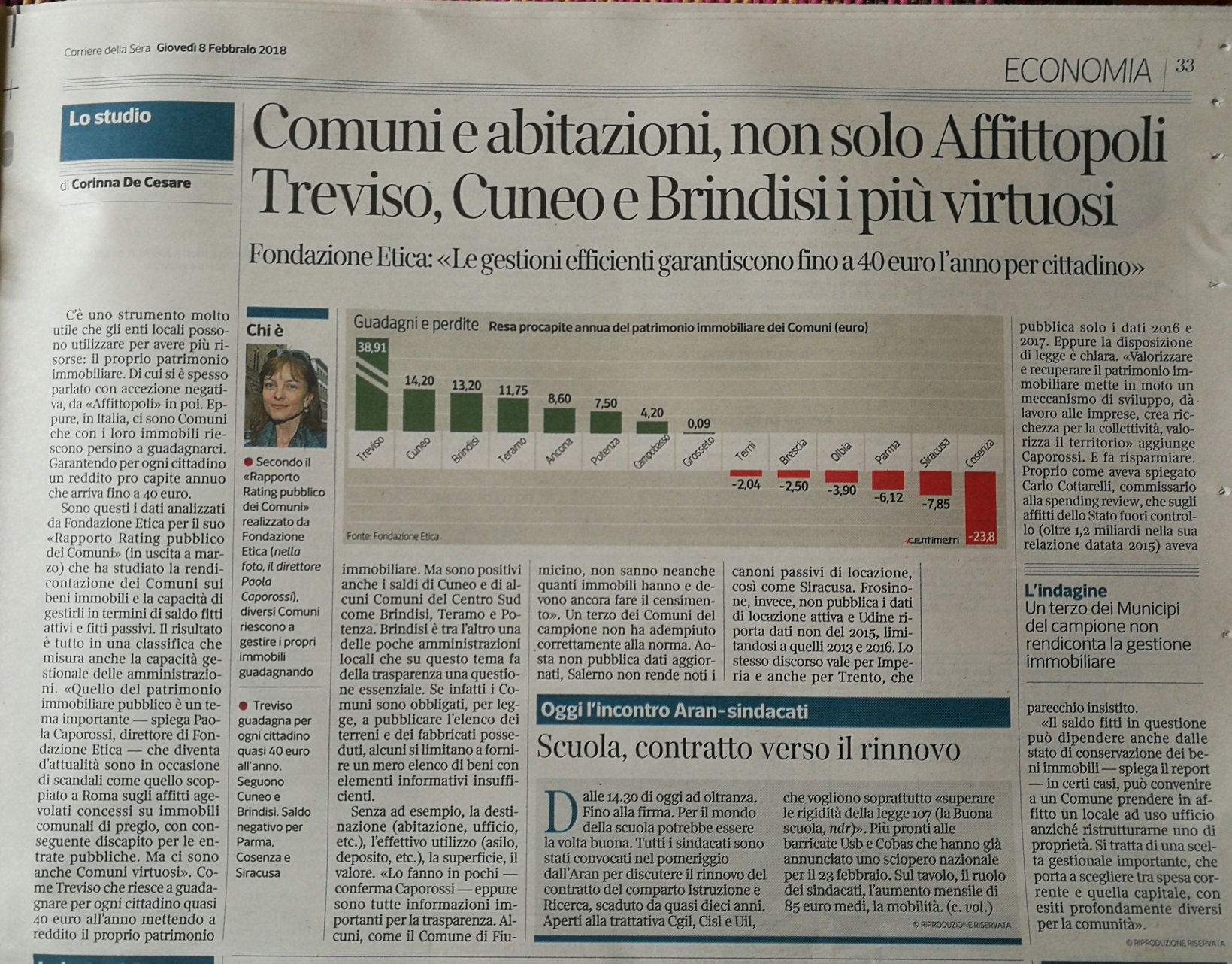
The Corriere della Sera, last February 8, published some data from our new Report on Municipalities, which will be released in March with Editore Rubettino.
Below is the extract:
MUNICIPALITIES, NO NEED FOR CUTS: THOSE WHO CAN EARN FROM PUBLIC REAL ESTATE
WHICH MUNICIPALITIES ARE THE MOST TRANSPARENT ABOUT THE USE OF REAL ESTATE
AND MORE EFFICIENT IN THE BALANCE OF RENTAL ASSETS AND RENTAL LIABILITIES,
ACCORDING TO THE PUBLIC RATING OF FONDAZIONE ETICA
In this time of the electoral campaign, the parties promise cuts of all kinds, but no one asks for lost earnings, for example, in the management of public real estate, both nationally, regionally and municipally. A heritage to be valued, but which often brings expenses and not income, as it should.
Do citizens know this? In reality, the management of public real estate assets is an indicator that they also little consider when evaluating their municipality: it is difficult for a citizen to ask his mayor for an account of how he uses a building, whether as the seat of a municipal office or whether it is on loan or on lease.
This information is important not only in terms of transparency, but also in terms of measuring the management capacity of a municipality. In the case of a private company, the managing director does not hide from the shareholders the names of the tenants of the real estate owned, nor, even less, the relative income: all the more reason, when it comes to managing a public asset, the privacy of the beneficiary of the concession, or lease, of a property clashes with the duty of accountability of a Municipality towards the de facto owners, who are the citizens.
The issue, on the other hand, becomes topical only on the occasion of scandals, such as the one that broke out in Rome on the subsidized rents granted on prestigious municipal buildings, with a consequent loss for public revenues. This is why in the evaluation of the Public Rating the indicator is one of the most significant for the evaluation of the governance of a Municipality.
Transparent municipalities on the use of real estate
Even before real estate management, it is often difficult to identify even simply the exact representation of public real estate assets. Municipalities are obliged to publish the list of land and buildings owned, but some limit themselves to publishing a mere list of assets with insufficient information.
The so-called "transparency" decree n.33/2013, in fact, does not specify much, where in article 30 it provides: "Public administrations publish the identifying information of the properties they own". It is, however, clear that the spirit of the law is not to simply publish the cadastral categories of buildings and land, but also, for example, the destination (residence, office, etc.), the actual use (nursery, storage, etc.), the surface, the value: the reality is that few do it.
The benchmark Municipality is Brindisi, which also manages to publish a graphic representation of its real estate assets, which in turn is proposed both in a summary and in a detailed version.
Read everything





